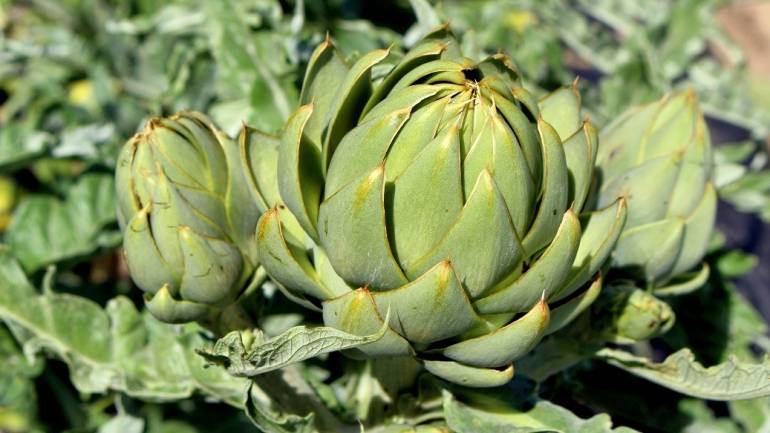Most men are not interested in the condition of their prostate until they observe bothersome symptoms related to its improper functioning. Only then do they reach for preparations to improve the condition of the prostate. But wouldn’t it be better to take care of this organ early on? iej?
The prostate – organ or obstacle?
The prostate (a.k.a. prostate gland, prostate) is an organ that is generally regarded as an obstacle to the proper functioning of a man’s genitourinary tract. But is the prostate actually an unnecessary and undesirable element? Absolutely not. The prostate, being a gland, has the ability to produce and secrete necessary substances. The secretion of the prostate is a kind of “complement” to sperm, since it is in the secretion of the prostate gland that sperm are suspended. The gland also produces a characteristic substance called PSA (prostate specific antigen), which is believed to facilitate fertilization.
Where is the prostate located?
The prostate, as it is known, is typically a male organ. It is located below the level of the bladder. It is built up by muscles and glands, arranged in the form of two lobes, connected by a node.
Prostate problems – how can they be observed?
The prostate gland may become enlarged. Typical symptoms are then observed, indicating problems with the proper functioning of the prostate. The aforementioned characteristic alarm signals of excessive prostate enlargement include:
- Push on the bladder (the sensation of a sudden need to urinate),
- Frequent micturition (frequent urination),
- modest amounts of urination (despite the impression of a full bladder),
- Difficulty in initiating micturition,
- A weakened “stream” of urine,
- uncontrolled discharge of urine (in small amounts) after micturition,
- soreness in the pit of the abdomen,
- frequent awakenings at night to urinate,
Why does the prostate affect urinary obstruction?
The effect of the prostate on urination, is due to the position of the prostate gland in relation to the urinary tract. They are located in close proximity to each other. Illustrating the relationship of their position, it should be taken into account that the urethra, runs, so to speak, through the center of the prostate (that is, the prostate surrounds the urethra on each side). When the prostate is of normal size, we do not observe its effect on the free flow of urine. In contrast, when the prostate enlarges, there is pressure on the urinary tract and thus, there is difficulty in micturition. Pressure on the urinary tract causes intermittent and incomplete urination. Hence the sensation of having to use the toilet more often than before.
What is prostate hypertrophy?
Prostate hypertrophy, is the colloquial term for a disease entity called benign prostatic hyperplasia. The substrate of this disease is the proliferation of glandular cells and/or cells of the prostate lining, which in effect causes pressure on the urinary tract.
Why is the prostate enlarging?
The prostate is an organ that changes in size as a man ages. Initially it reaches a size of only 2cm3 (in infancy), then atrophies to begin a gradual growth in reproductive age. The normal size of the prostate is likened to the size of an edible chestnut. When patients are diagnosed with prostatic hypertrophy, the prostate can reach the size of an orange. The growth of the prostate as part of male development is a physiological phenomenon, but its excessive growth is already classified as a pathological phenomenon.
DHT – what is it and how does it affect the size of the prostate?
DHT is a derivative of testosterone (i.e. dihydrotestosterone). Testosterone levels have been found to affect the size of the prostate. If the amount of DHT is not high, the prostate remains at a size that does not interfere with free urination. However, if there is too much DHT in a man’s body, then the prostate becomes enlarged.
At what age can difficulties be expected? What can they be caused by?
Prostate hypertrophy mainly affects men over the age of 60. Sometimes, however, the first symptoms of prostatic hypertrophy appear in the forties. Prostate hypertrophy is considered a risk factor not only for the patient’s age, but also for health complications, especially prostate cancer.
Does the prostate affect a man’s sexual performance?
Yes. The prostate is not only directly involved in ejaculation, but also affects a man’s self-esteem. If a man is aware that he suffers from benign prostatic growth, he may feel apprehensive about sexual intercourse. In addition, the constant physical and mental fatigue resulting from the need for frequent visits to the restroom, often ending in failure to fully urinate, undeniably affects a man’s potency. However, these are factors that can be regulated to some extent. A man does not need to focus all his attention on prostate complaints. It is worthwhile for just sexual contact to provide a “springboard” from the problems associated with a diseased prostate. In addition, note that we have no evidence that says that benign prostatic hyperplasia can make it difficult to achieve erection and ejaculation (ejaculation of semen).
The role of the prostate in ejaculation (ejaculation of semen)
It has already been mentioned that the secretory function of the prostate is extremely important for the process of fertilization, since it is the secretion of the prostate that provides the substrate for male reproductive cells (sperm). But the role of the prostate does not end only with the function of secretion of internal substances. During erection, and just before the ejaculation of semen, the prostate contracts. This contraction ensures that the outflow of urine from the bladder is blocked during ejaculation. This is an extremely important function, because, as is well known, the path of ejaculation of semen and the path of urine outflow, in the male urogenital system, is one. Thus, the blockage of urine outflow, accounts for the possibility of movement of semen.
How to recognize prostatic hypertrophy?
Prostate hypertrophy is diagnosed on the basis of the symptoms already mentioned. When going to a specialist – a urologist – a man should present all the symptoms that he is feeling and that worry him. The urologist will certainly order a urinalysis, as well as perform a “per rectum” (that is, through the rectum) examination. Based on it, he will determine the approximate size of the prostate, its consistency and shape. In the next step, he will order treatment to inhibit further growth of the prostate, and the difficulty in urinating will diminish.
How to prevent prostate hypertrophy?
Prevention of prostatic hypertrophy involves the introduction of an appropriate diet, supplemented with preparations with herbal extracts with proven effectiveness in the prevention of prostatic hypertrophy, and daily exercise. The three-pronged action has a beneficial effect on the condition of the prostate, as well as improving a man’s self-esteem (diet and exercise are recommended for many conditions and noticeably improve well-being).
Diet to support the prostate
In most conditions, diet is included among the elements of prevention. Also in the case of prostate disorders, certain recommendations have been made to the diet of patients. It was found that in the men’s diet of mature age, pumpkin seeds, soybeans, sunflower seeds, sesame seeds, beans, chickpeas and peas should not be missing. The above nutrients contain so-called phytosterols, known in particular for their cholesterol-absorption-reducing effect. But this is not their only benefit. Phytosterols can be referred to as hormone substitutes. These compounds, of plant origin, reduce prostate hypertrophy, on the principle of “pretending” to be a derivative of testosterone (DHT), contributing to the gradual growth of the gland. The body mistakenly recognizes phytosterols as testosterone and recycles them into substances that do not threaten the prostate in any way. In addition, plant phytosterols regenerate prostate epithelial cells, stimulate the secretory function of the prostate, and reduce swelling and proliferation of the lining. They also reduce muscle tension in the urethra and bladder, allowing urine to flow more freely through the urethra. Given the beneficial properties of phytosterols, we can’t overlook their anti-inflammatory effect. This is a particularly important feature in the case of benign prostatic hyperplasia, which is usually just accompanied by inflammation.
Effective prostate preparation – which one to choose?
There are many preparations in pharmacies to help prevent prostatic hyperplasia. Most of them are dietary supplements with no studies confirming their effectiveness and safety of use. Therefore, it is worth reaching for a preparation that has been registered as an over-the-counter prostate medication (such as Poldanen), rather than a dietary supplement.
Poldanen – over-the-counter drug
Poldanen preparation contains African Plum bark extract, characterized by its ability to reduce the annoying symptoms of benign prostatic hyperplasia. African Plum bark extract is rich in phytosterols. Regular use of Poldanen reduces the amount of micturition during the day, reduces the frequency of awakenings at night to urinate, and contributes to easier urination.
How to use the drug Poldanen?
Poldanen drug is used for at least four weeks, taking two tablets twice a day (preferably with a meal). Treatment with Poldanen can be prolonged as the patient needs.







